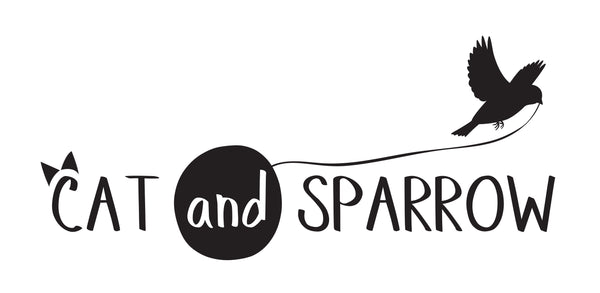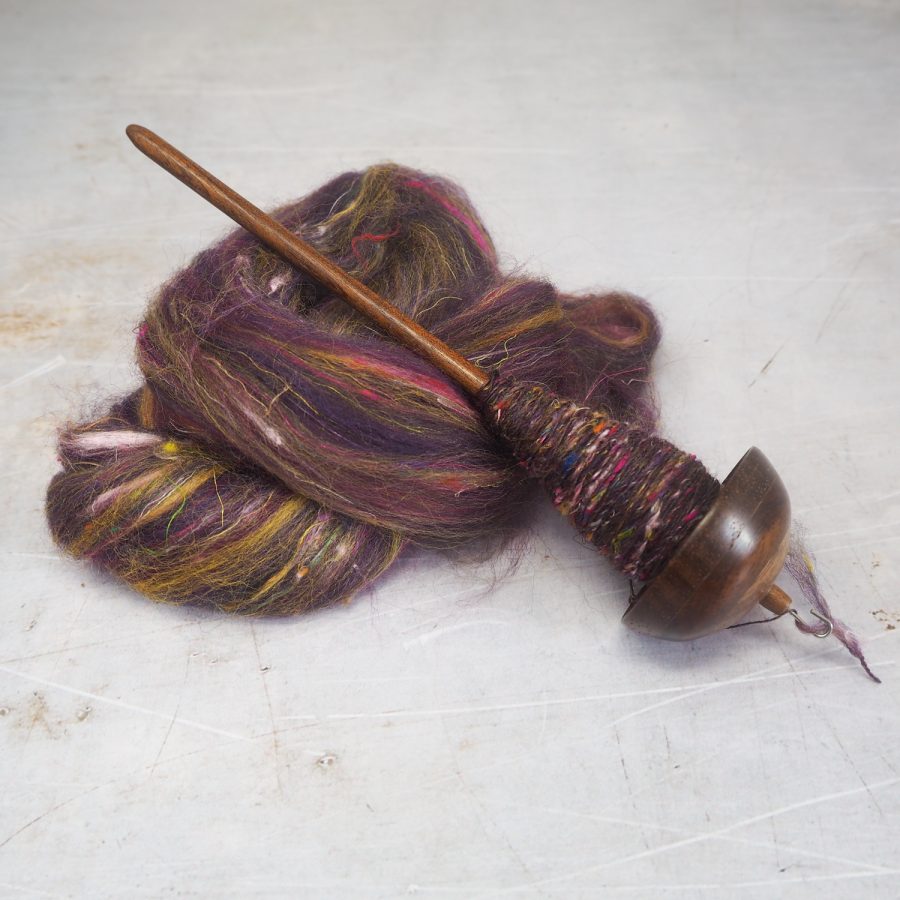Welcome to the second instalment of my series on spindles and how to choose them. This post will concentrate on drop (or suspended) spindles, because this is my main area of expertise/experience. I started spinning with drop spindles about 7 years ago, after my husband gifted me two absolute beauties - a KCL Woods top whorl spindle and a Jenkins Turkish Delight. Both of these spindle makers are justifiably renowned for their skill. I love KCL woods because he does something he calls a modular spindle, where he provides three different shafts that can be removed from the whorl when full, and replaced with a fresh one.
Drop spindles share one thing in common - they add twist to your fibre while hanging, suspended, from the yarn you are spinning. Under this umbrella sit a few different types of drop spindle, so I'll give a quick overview.
Spindle types
Top/High Whorl
Top whorl spindles, predictably, have the whorl situated at the top end of the shaft, and the cop (the bundle of freshly spun yarn) is wound beneath it.
The whorl can take many forms - wide, narrow, rim-weighted or with the bulk of the mass concentrated around the shaft. The majority of drop spindles made these days tend to be top whorl spindles, although historically, most were bottom whorl spindles (I'll explain why I think this is in a moment).
One really interesting spindle in this category is the Victorian lace spindle. These are quite unusual, and there really isn't very much available historical information about them. They have a very narrow whorl, where all the weight is concentrated around the shaft. This means that they will spin extremely fast, adding twist to your yarn very quickly. This is great for very fine spinning, short fibres and silk. I'm waiting for one to arrive from The Spanish Peacock, and I can't wait to try it out.
Bottom/Low Whorl
The whorls on bottom whorl spindles are situated (wait for it) at the bottom end of the shaft, and the cop is wound above it. The Turkish spindle is an example of a low whorl drop spindle.
When the weight is concentrated towards the base of the shaft, the spindle tends to be more stable and more forgiving of balance flaws and wobble, meaning they are great for beginners.
The reason I think bottom whorl spindles were more common historically is that people tended to make their own spindles out of readily available materials. They were not necessarily artists working with precision tools and an abundance of time. Their spindles needed to be functional and forgiving rather than beautiful works of art. The low whorl style afforded these qualities more easily than the high whorl. This is entirely conjecture, but it makes sense to me.
Mid Whorl
The mid whorl style, as you might expect, features the whorl in the centre of the shaft. This is an unusual style of spindle, the most famous of which is the Akha, used by the Akha people of Laos, Myanmar Thailand and China. The spindle is used primarily to spin cotton, and is used both as a supported and a drop spindle.
Other
There are two really interesting spindles in this category as well - the dealgan and the French spindle. The dealgan, like the Turkish spindle, winds the cop into a centre-pull ball, which is enormously convenient for plying purposes. (I am not a fan of winding the cop off a spindle to prepare for plying, although this is because I fundamentally lack patience.) The general feeling is that neither of these types of spindle has a whorl, but they do have sections of the shaft that are wider and weightier than the rest, which, in my opinion, constitutes a whorl of sorts.
The French spindle is also not considered a drop spindle in the truest sense, because it uses the medieval hand-supported style. This means that one hand remains very close to the spindle, administering twist almost continuously, while the other drafts fibre from a bundle stashed on a distaff. The spindle is still suspended from the yarn, but only in very short sections. The dealgan can be used in this style too.
Choosing a spindle
Weight and speed
When you're choosing a drop spindle, two things are important - weight and speed. If you are interested in spinning fine yarns, you will need a spindle that won't put too much strain on the yarn as it adds twist, so a lightweight spindle is probably best.
You'll also need to consider how fast it is likely to spin. The more quickly a spindle adds twist, the less likely the yarn is to drift apart as you spin. A spindle that has its weight concentrated around the shaft, like the Victorian spindle, will spin much faster than one where the weight is distributed around the edge. The Turtlemade Midi spindles are very fast for this reason.
Conversely, if you love to spin chunky yarns, you need a lot less twist, and you want something that can take a reasonable amount of chunky yarn, so the spindle will need to be larger and, consequentially, heavier. You also probably want something that spins more slowly, so you'd be looking at a spindle that has all its weight concentrated on the rim, rather than in the centre. The Turtlemade Standard spindles fall into this category, because their weight is more evenly distributed across the arms.
Hook or not?
Some drop spindles have a hook placed at the top of the shaft, some have a notch, and some have a little nodule or bump around which you can secure a half hitch. Really, your choice of hook depends on what you're happiest using, but bear in mind that not all hooks are created equal. Ideally, you want the apex of the hook to be right above the centre of the shaft. This will increase stability and help lengthen the spin, because the centre point is true, rather than offset. With top whorl spindles, I like to have a hook but with Turkish spindles I much prefer using a half hitch. It's a matter of preference, but it helps to know what you're looking at.
I really recommend trying out a few different styles of spindles. I went through a phase a few years back of collecting spindles that I loved the look of. Eventually, as I became more familiar with my preferred spinning style I weeded out the ones that I wasn't using for one reason or another - they were too slow, or too heavy, or just didn't spin in a way that pleased me. My collection now consists of a few that I really love and will never part with.
If you have any questions, drop me an email! If you fancy a drop-spindling lesson with me, check out my one-on-one sessions.
Happy spinning!
I've linked to some US-based spindle makers in the post, but here is a short (and I'm sure, incomplete) list of some amazing British spindle makers:
IST Crafts – Enid Ashcroft – Michael Williams – Wildcraft
For my blog post on how to choose a supported spindle, go here

